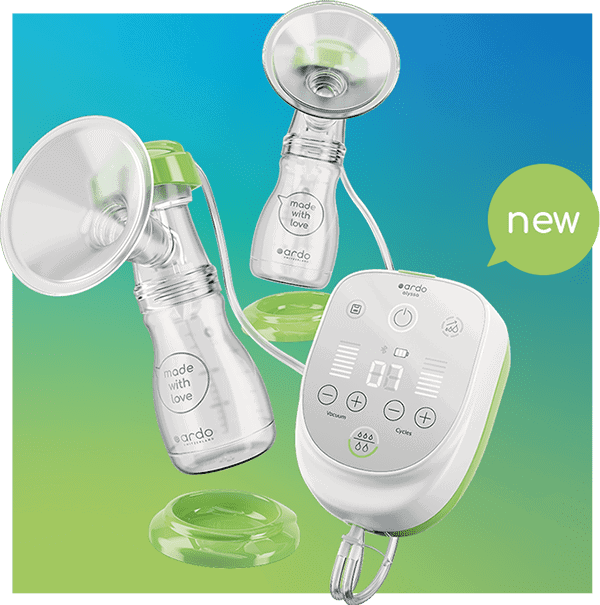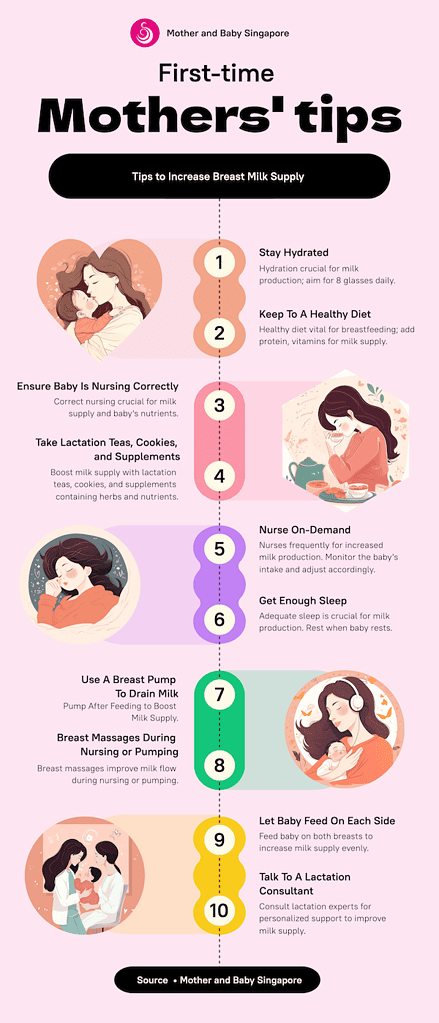Increasing your breast milk supply to meet your baby’s feeding needs is a topic many new mothers look to know more about. Moms often worry that their milk supply is insufficient to nurture their growing baby. Luckily, there are some simple steps that you can take in order to increase your breastmilk production.
This article will provide information on the best ways to increase milk supply to support the feeding and nutritional needs to grow healthy and strong.
Why Is Breastfeeding Beneficial?
Breastfeeding provides babies with all of the nutrients they need in their early months and can be especially helpful if there are any kinds of allergies present in the baby’s diet. Breastfed babies also typically sleep better than formula-fed ones, which means more rest for both parents and baby. It has also been shown that breastfeeding may lower a mother’s breast and ovarian cancer risk.
This is because breast milk contains estrogen, lowering the risk of these cancers in breastfeeding women. Breastfeeding also helps moms to lose weight quicker than those who don’t breastfeed since this releases a hormone that suppresses appetite.

Increase Breast Milk With These Tips
When you are a mother, one of the most important things that you can do is to breastfeed your baby. Most mothers have a hard time keeping up with their milk supply because they don’t know what they should be doing to increase a low milk supply.
Below, you will find a list of the top ten things that you can do to increase breast milk production. You don’t have to do them all, but if one doesn’t work for you, then try another until something does!
Stay Hydrated To Increase Breast Milk Production
Most mothers who experience low breast milk production will intuitively increase their intake of hydrating fluids such as water, milk, fresh fruit juices and vegetable juices to boost milk production. Breastfeeding mothers who take in extra fluids to increase milk supply may not see drastic results, but dehydration does cause milk production to decrease.
The exact amount of recommended fluid intake varies per person based on their body mass index. It is best to aim for a minimum of eight eight-ounce glasses of hydrating fluids a day.
While breastfeeding, it is best to refrain from high-sugar drinks and those with caffeine. These can cause babies to become fussy and can also cause dehydration when taken in large amounts.
Keep To A Healthy Diet
Breastfeeding mothers require about an extra 500 calories per day of nutrition, plus 100 calories for each hour of breastfeeding per day. Eat at least three healthy meals a day with snacks to increase milk supply and provide energy while nursing.
Mothers should also consider adding an extra snack before bedtime if they are experiencing low breast milk production. Keep some food on hand that is easy to prepare quickly, like eggs, beans, lentils and plums. These options are all excellent protein sources that help stimulate breast milk production.
Adding in foods rich in vitamins B and C will also support the production of breastmilk, so foods like salmon, various fruits, and leafy greens can be a great addition to your daily diet.
Make Sure Baby Is Nursing Correctly
Keep in mind that your breast milk supply highly depends on how much your baby is consuming. If your baby has a difficult time latching on and nursing correctly, they may not be fully draining your milk supply with each feeding. Your body does not receive a signal to produce more as the initial supply was not completely used up.
Making sure that baby is feeding correctly also ensures they are getting the right amount of nutrients to meet their dietary needs. Should your baby have difficulty nursing, it is best to consult a lactation specialist to help.
The first few weeks can be considered a testing phase. During this time, constant skin to skin contact and discovering which positions both you and baby are comfortable with while nursing can improve the baby’s latch and promote healthy nursing. Try out various positions to see which suits both you and your baby best to ensure proper milk flow.
Take Lactation Teas, Cookies, and Supplements
Boosting milk supply to meet baby’s nutritional needs can also be done through drinking lactation teas. These teas contain herbs such as fenugreek, borage, and fennel. Such herbs promote milk production and go great with lactation cookies.
Lactation cookies increase the production of milk in breastfeeding mothers by providing extra calories and nutrients that can be made specifically for nursing moms. Depending on the recipe, cookies can mix oatmeal, brewer’s yeast, flaxseed, and fennel.
These delicious treats have been gaining popularity over the last few years as more people realise how important it is to maintain a healthy diet when breastfeeding or pumping regularly. Taking tea and cookies for a mid-meal snack satisfies any hunger pangs and brings you a step further towards a healthy amount of milk production!
In terms of lactation supplements, they contain most of the herbs and ingredients that are in breast milk, and since they’re typically not mixed with water or sugar, some mothers may find them more appealing. The right supplements will also contain other ingredients, such as immunity-boosting vitamins and minerals or omega-rich fats and oils.
Most lactation supplements should not be solely relied on as a means of increasing breast milk production – they are often used alongside other techniques, such as pumping regularly when it’s time for the baby to feed. However, some mothers find that adding one supplement can slightly increase their supply without any additional effort.
Nurse On-Demand
The amount of breast milk your body produces depends on how much the baby needs. This means that the more your baby nurses, the more breastmilk your body will produce in order to meet that need. With that, nursing on demand can increase production due to the baby’s intake.
It’s important to note that your baby will not increase their intake if they are not hungry. So, it may take a day or two of monitoring the amount of breastmilk your body is producing and nursing on demand for the milk supply to regulate. Once you have established a routine with feeding times, track how many ounces the baby takes at each session and nurse according to that need.
Let Baby Feed On Each Side
Some babies tend to favour one side, but allowing them to feed on each breast can benefit the amount you produce. Doing so also ensures that both sides are drained of milk, signalling to your body that more milk needs to be produced to keep up with the baby.
Babies who breastfeed should be allowed to feed on each side until complete because they need the additional calories from both breasts every day. When you’re producing enough milk to satisfy your baby but you worry about not having enough supply, this will increase it again without supplementary feeding or pumping sessions too often.

Use A Breast Pump To Drain Milk
Using a breast pump to drain leftover milk is another way to stimulate the breasts to produce milk. Pumping is especially helpful for mothers who have a hard time breastfeeding or those with an insufficient milk supply. It’s important to note that breast pumps should be used after feedings, not during them, because they increase the risk of nipple confusion and may overstimulate your breasts.
Using a breast pump once per day can stimulate healthy production, but if you’re trying to measure how much milk you produce, it shouldn’t exceed 20 minutes at one time. However, pumping too often will lead to poor fluid balance in both breasts and possible mastitis, making matters worse than before – so don’t go overboard!

Breast Massages During Nursing or Pumping
Gently massaging your breasts or compressing them while nursing is an effective way to push out more milk during nursing sessions. Massage and compression also work during pumping sessions to effectively empty breasts of milk, signalling your body to produce more. For effective results, here is a simple process to follow:
Step 1: Wash your hands thoroughly before starting the massage to prevent germs and bacteria from contaminating milk or causing unwanted infections.
Step 2: Place a small amount of breastfeeding-friendly lotion or oil on nipples to prevent them from getting dry or cracked and causing discomfort. Cracked nipples also contribute to a low milk supply.
Step 3: Using gentle but firm strokes in an upwards direction, use your thumbs around the entire circumference of each breast near where it meets with your chest wall.
Step 4: Gently press and massage the area just below your nipples to increase milk flow.
Get Enough Sleep
As a new mother getting enough rest can be challenging, but the more sleep you get during this time period, the better. Mothers who are breastfeeding should try to sleep as much as possible while their baby sleeps in order for them to produce enough breast milk.
If you have trouble sleeping, you may find that taking a warm bath or using essential oils can help with relaxation and decrease anxiety levels about not being able to feed your baby at night.
Mothers mustn’t deprive themselves of high-quality rest, which can lead to lowered immune function because fatigue increases stress hormone levels which could result in lower milk production over time.

Avoid Stress
When mothers are stressed, they produce less breast milk. This is because the hormone cortisol increases when you’re feeling stressed, and it inhibits prolactin production, making your breasts produce less breast milk. So one of the best ways to increase your production is by reducing stress in every way possible!
Try Not To Use Bottles and Pacifiers
If it can be avoided, opt not to use bottles and pacifiers for feeding and soothing. Using artificial nipples to feed or soothe babies can increase their reliance on them. When a baby starts to depend more on bottle feeding and pacifiers and no longer prefers the mother’s breasts, this leads to a decreased milk supply as your body assumes that less is needed.
Breastfeeding moms should nurse the baby naturally as often as possible. It is the baby’s sucking that directly signals the body to produce more milk based on how often and how much the baby is drinking each nursing session.
Talk To A Lactation Consultant
Natural home remedies to increase milk supply for breastfeeding moms are the best way to ensure babies get their daily dietary and nutritional needs. Breast milk will be their only source of such a good milk supply, so it is crucial to monitor and track if you wish to breastfeed solely.
However, some mothers may find it challenging to maintain enough milk to keep up with their baby’s demands even if they continue to follow the remedies listed above. Many moms experience this and opt to contact a lactation consultant to discover their options.
Lactation consultants may recommend specific support supplements to increase supply or a nursing schedule aimed at producing enough breast milk to nurture their growing baby.
Breastfeeding is a beautiful journey with benefits for both mother and baby, but mothers must keep in mind that cases differ for each. Should requirements such as rotation feeding be needed (switching between breastfeeding and bottle feeding) to meet the baby’s needs, mothers should still be proud of their body’s ability to provide milk supply to the baby. Even minimal amounts still offer tons of nutritional and health benefits to both!
Key Takeaways
Increasing your milk supply may not happen overnight. The important thing is to have a schedule for feeding and expressing milk that signals your body that more is needed to meet your baby’s growing needs.
Keep in mind that a healthy diet, lifestyle, and support go a long way in helping increase milk production naturally. It can also benefit from speaking with location consultants, doctors, or support groups to get more advice and insight into breastfeeding.
In summary, here’s an infographic with some of the tips we’ve mentioned:-








